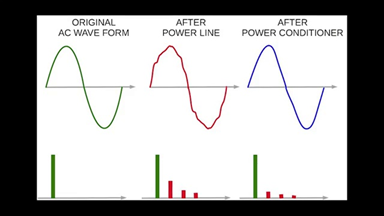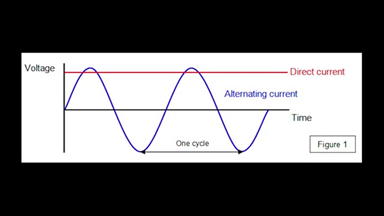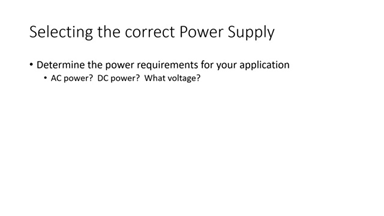How_to_Select_and_Size_a_Power_Supply.pdf
Transcript:
[0m:0s] Hi I'm Josh Bloom, welcome to another video in the RSP Supply education series. If you find that these videos are helpful to you, it certainly helps us out if you could give us a big thumbs up and subscribe to our channel. In today's video, we want to discuss some electrical situations where the power that is available does not meet the needs of your specific application.
[0m:27s] In these types of situations, it may be necessary to use a power supply in order to alter the power that is available, so that it conforms to fit your needs.
[0m:39s] Power supplies are a very common electrical component and are used in many different scenarios.

[0m:46s] In this video we want to help explain some of the most common reasons power supplies are used, and what considerations you need to think about when trying to select the correct power supply. These considerations include: what type of power is needed, and also, how much current might potentially be required for the devices utilizing the power supply you select. We hope that by the end of this video, you have a solid understanding of the process that you should go through when selecting and installing one of these devices.
[1m:21s] A power supply can have many functions, but two of the most common
[1m:25s] are to condition the power to ensure that the voltage is delivered at the proper level

[1m:31s] and with the right characteristics to enable the equipment to function properly. The other common function is to alter the power from one type to another.

[1m:43s] For example, it is common to use a power supply to change the power from 120 volts AC to 24 volts DC.
[1m:51s] However, this is just one example. There are literally dozens of variations that can be performed depending on your needs. With these functions in mind let's look at some considerations that you should make when selecting a power supply for your specific application.
[2m:14s] When selecting a power supply, you first need to determine what your power requirements are,
[2m:23s] and then decide if the power that is available will meet your needs. If not, you will most likely need some kind of power supply, either for conditioning the power or to alter the power, or possibly both.
[2m:27s] Once you determine your power requirements, you can select the correct power supply. Let's assume you are stepping power down from 120 Volt AC to 24 volts DC, as this is one of the most common applications.
[2m:41s] At this point you're halfway there, however, the next step is very important.
[2m:46s] Each power supply is rated for a specific amount of power generation.
[2m:51s] For example,

[2m:52s] if you purchase the power supply that is rated for five amps at 24 volts DC,
[2m:58s] based off the power law, where voltage times amperage equals total wattage,
[3m:3s] the power rating for that power supply is roughly 120 Watts. This rating is very important
[3m:9s] because if this number is exceeded, it can cause a failure of the power supply and potentially damage other hardware wired downstream or on the load side of the device. To avoid this failure it is important that your power supply is sized correctly.
[3m:26s] To do this, you need to determine what devices will be reliant on the power supply,
[3m:32s] and then determine what the total power consumption will be.
[3m:36s] For example,
[3m:38s] if you know that you have a power supply that is providing 24 volts, you will need to identify every device that requires 24 volts that is also expected to have power delivered from that specific power supply. So let's assume that there is a network switch, a radio, and a PLC.
[3m:55s] In order to properly size the power supply to make sure you can safely provide power to all of those devices without failure, you need to determine how much current each device will potentially draw.
[4m:8s] With that information, you can find out how much power each device requires.
[4m:14s] The sum of all power to be delivered needs to be less than the total power rating of the power supply you select. So, if those three devices combined for a total of 100 watts, then the five AMP power supply, which is rated for up to 120 Watts, would be sufficient.
[4m:30s] However, if the sum of those devices’ total power requirement is greater than that of the power supply rating, then a different power supply should be selected.
[4m:40s] It is important to allow for a buffer or safety factor when sizing your power supply.
[4m:46s] Never select a power supply that is rated for the same amount of power as the total power requirement of all of your devices. Oversizing your power supply will allow for changes and additions that might occur in the future.
[4m:59s] By following some of these simple guidelines, and having a solid understanding of power supply functionality, you'll be able to confidently select and size a power supply that can fit your needs and function properly for a long time to come. For a full line of power supplies and thousands of other products, please go to our website. For more information or other educational videos, go to RSPSupply.com, the Internet's top source for industrial hardware. Also, don't forget: like and subscribe.




